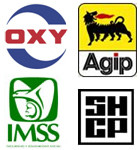|
Business and Corporate Strategy Projects
 Formulated the Corporate Plan for one of South-East Asia’s largest oil, gas and chemical conglomerates. The project analyzed the portfolio of businesses and ranked them by EVA, therefore identifying value creators and value destroyers. The project then identified major areas of opportunity that could be captured in each of the businesses, resulting in an estimated net increase in the company’s market valuation of 3.5 billion dollars. Formulated the Corporate Plan for one of South-East Asia’s largest oil, gas and chemical conglomerates. The project analyzed the portfolio of businesses and ranked them by EVA, therefore identifying value creators and value destroyers. The project then identified major areas of opportunity that could be captured in each of the businesses, resulting in an estimated net increase in the company’s market valuation of 3.5 billion dollars.
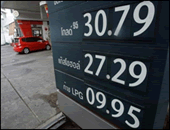 Designed a segmentation and pricing strategy for natural gas sales for one of South-East Asia’s largest energy companies. The company was charging the same price to all customers regardless of the volumes they consumed and of the customer profile. The project recommended that the company apply differential pricing based on each segment’s ability to substitute its gas supplies with alternative energy supplies. Implementation of the recommendations resulted in a 40% increase in sales revenues. Designed a segmentation and pricing strategy for natural gas sales for one of South-East Asia’s largest energy companies. The company was charging the same price to all customers regardless of the volumes they consumed and of the customer profile. The project recommended that the company apply differential pricing based on each segment’s ability to substitute its gas supplies with alternative energy supplies. Implementation of the recommendations resulted in a 40% increase in sales revenues.
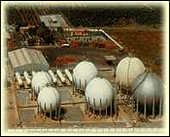 Redesigned & implemented the business processes for one of South-East Asia’s largest gas processor and gas transportation companies. The company was facing imminent deregulation and was ill prepared to operate in a competitive environment. Therefore, the project focused on four key processes that would better enable the company to cope with the transition. These processes were: long-term supply sourcing, customer identification, pricing, and customer service. The client has now fully implemented these new processes and is effectively competing in the market. Redesigned & implemented the business processes for one of South-East Asia’s largest gas processor and gas transportation companies. The company was facing imminent deregulation and was ill prepared to operate in a competitive environment. Therefore, the project focused on four key processes that would better enable the company to cope with the transition. These processes were: long-term supply sourcing, customer identification, pricing, and customer service. The client has now fully implemented these new processes and is effectively competing in the market.
 Evaluated the feasibility for a natural gas transporter and gas processor to move downstream into the distribution of bottled LPG in Thailand. The project assessed the market dynamics for LPG in Thailand. The project team concluded that there was definitely an opportunity for an innovative player to gain an important position in this market. However, the team also believed that the upstream company was ill-prepared to capitalize on these opportunities given its lack of capabilities in this area and its need to focus on other more pressing issues. Consequently, the project recommended against investing directly in this sector. However, it did leave open the possibility of seeking out a JV partner who could bring the necessary capabilities to bear. Evaluated the feasibility for a natural gas transporter and gas processor to move downstream into the distribution of bottled LPG in Thailand. The project assessed the market dynamics for LPG in Thailand. The project team concluded that there was definitely an opportunity for an innovative player to gain an important position in this market. However, the team also believed that the upstream company was ill-prepared to capitalize on these opportunities given its lack of capabilities in this area and its need to focus on other more pressing issues. Consequently, the project recommended against investing directly in this sector. However, it did leave open the possibility of seeking out a JV partner who could bring the necessary capabilities to bear.
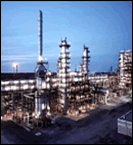 Developed a seven-year, US$ 9 Billion investment and business plan for a major oil refining company. The business plan projected a 9% boost in the return on assets and defined the road map for how the company would achieve key targets and milestones. To date the company has implemented most of this strategic plan. Developed a seven-year, US$ 9 Billion investment and business plan for a major oil refining company. The business plan projected a 9% boost in the return on assets and defined the road map for how the company would achieve key targets and milestones. To date the company has implemented most of this strategic plan.
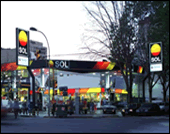 Designed a strategic alliance framework between a major state owned downstream company and a multinational energy company to develop a service station network in both North and South America. The alliance framework proposed to merge both networks and develop a joint C-Store / Service Station concept. The framework was used as the basis for discussions and negotiations between both parties. Designed a strategic alliance framework between a major state owned downstream company and a multinational energy company to develop a service station network in both North and South America. The alliance framework proposed to merge both networks and develop a joint C-Store / Service Station concept. The framework was used as the basis for discussions and negotiations between both parties.
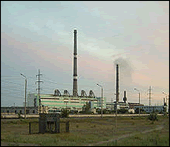 Identified the macroeconomic energy policy implications related to substituting fuel oil for gas in the Mexican electricity market. While the Mexican state-owned power sector was an ideal outlet for the vast amounts of fuel oil and residuals generated from Mexico’s oil refining industry, it was also the cause of major environmental pollution. As a result the Mexican government decided to switch its power generation over to natural gas. This change not only required the development of major investment in gas and power infrastructure, but also the need to secure an outlet for Mexico’s heavy refined products. Hence, the project envisioned the upgrading of Mexico’s refineries to produce higher grade products and the development of Mexico’s power and gas sectors. These recommendations became the basis for the transformation of Mexico’s energy sector. Identified the macroeconomic energy policy implications related to substituting fuel oil for gas in the Mexican electricity market. While the Mexican state-owned power sector was an ideal outlet for the vast amounts of fuel oil and residuals generated from Mexico’s oil refining industry, it was also the cause of major environmental pollution. As a result the Mexican government decided to switch its power generation over to natural gas. This change not only required the development of major investment in gas and power infrastructure, but also the need to secure an outlet for Mexico’s heavy refined products. Hence, the project envisioned the upgrading of Mexico’s refineries to produce higher grade products and the development of Mexico’s power and gas sectors. These recommendations became the basis for the transformation of Mexico’s energy sector.
 Developed a feasibility and entry strategy for a multinational oil company wishing to enter an emerging market. The study presented the challenge that the energy sector, which the client wished to enter, was reserved for the government. Therefore, the project focused on alternative ways to profitability build brand image through strategic alliances in related industry segments while waiting for the government to open up the market to third parties. Developed a feasibility and entry strategy for a multinational oil company wishing to enter an emerging market. The study presented the challenge that the energy sector, which the client wished to enter, was reserved for the government. Therefore, the project focused on alternative ways to profitability build brand image through strategic alliances in related industry segments while waiting for the government to open up the market to third parties.
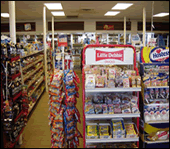 Carried out a strategic audit of an 18 month joint venture between one of Latin America’s largest bottlers and one of the US’s largest energy companies. The audit focused on how to accelerate growth and enhance cross-company capability transfer. The audit recommended that the JV redirect its site-selection to only a few major cities and downscale its store format given that it was overbuilding vis-à-vis the market requirements. Carried out a strategic audit of an 18 month joint venture between one of Latin America’s largest bottlers and one of the US’s largest energy companies. The audit focused on how to accelerate growth and enhance cross-company capability transfer. The audit recommended that the JV redirect its site-selection to only a few major cities and downscale its store format given that it was overbuilding vis-à-vis the market requirements.
 Developed a cement aggregates exit strategy in an emerging market for one of the largest cement companies in the world. The study analyzed the market conditions for aggregates in the country and concluded that the company should divest its aggregates operations given that the market would remain oversupplied and under-priced for the foreseeable future. Developed a cement aggregates exit strategy in an emerging market for one of the largest cement companies in the world. The study analyzed the market conditions for aggregates in the country and concluded that the company should divest its aggregates operations given that the market would remain oversupplied and under-priced for the foreseeable future.
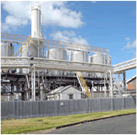 Developed a vulnerability analysis for a major North American chemical manufacturer. The project identified the cost competitiveness on a delivered basis for each of the company’s products vis-à-vis each of its competitors. The study compared each of the cost components including: raw materials, manufacturing, logistics, sales and overhead costs. As a result, the chemical manufacturer was able to identify the degree of cost advantage or disadvantage it had vs. other competitors at each of the customer sites. This information was used as the basis for pricing and competitive bids. Developed a vulnerability analysis for a major North American chemical manufacturer. The project identified the cost competitiveness on a delivered basis for each of the company’s products vis-à-vis each of its competitors. The study compared each of the cost components including: raw materials, manufacturing, logistics, sales and overhead costs. As a result, the chemical manufacturer was able to identify the degree of cost advantage or disadvantage it had vs. other competitors at each of the customer sites. This information was used as the basis for pricing and competitive bids.
 Developed a customer loyalty program for an incumbent power player facing deregulation and increased market competition in Mexico. The project focused on proactively creating a framework to develop and evaluate various marketing initiatives. The project established specific parameters and methodologies for data gathering on customer and competitor intelligence. It then outlined the framework for segmenting the customer base so that differential marketing plans could be developed for each segment. Finally, the project helped identify the capability and resource gaps that existed in order to deliver and support potential marketing initiatives. Management has used the recommendations of this study to develop its strategy to compete in a deregulated market. Developed a customer loyalty program for an incumbent power player facing deregulation and increased market competition in Mexico. The project focused on proactively creating a framework to develop and evaluate various marketing initiatives. The project established specific parameters and methodologies for data gathering on customer and competitor intelligence. It then outlined the framework for segmenting the customer base so that differential marketing plans could be developed for each segment. Finally, the project helped identify the capability and resource gaps that existed in order to deliver and support potential marketing initiatives. Management has used the recommendations of this study to develop its strategy to compete in a deregulated market.
 Defined the technological and business strategy for the production & commercialization of a heavy crude oil well in South America. The well represented one of the company’s largest oil reserves but was mired by major logistical and political problems. After having analyzed numerous alternatives, the project identified the best way to monetize the crude worth over $ 1 billion in recoverable reserves. Defined the technological and business strategy for the production & commercialization of a heavy crude oil well in South America. The well represented one of the company’s largest oil reserves but was mired by major logistical and political problems. After having analyzed numerous alternatives, the project identified the best way to monetize the crude worth over $ 1 billion in recoverable reserves.
 Designed the strategic information technology plan for one of the world’s largest Exploration and Production companies. The project focused on how to leverage I/T to meet the company’s business goals. This required a major cultural change at the management level given that up until then, I/T had not been viewed as needing to be included within the company’s strategic agenda. Designed the strategic information technology plan for one of the world’s largest Exploration and Production companies. The project focused on how to leverage I/T to meet the company’s business goals. This required a major cultural change at the management level given that up until then, I/T had not been viewed as needing to be included within the company’s strategic agenda.
 Developed a pricing strategy for a major chemical manufacturer whose product lines were highly price sensitive. The project first focused on defining various customer segments and identifying which of these were more price inelastic. In addition, the project determined cost competitiveness on a customer-by-customer and product-by-product basis versus each of the competitors. As a result, the sales force was able to increase its sales effectiveness and augment the contributing margin by nearly 25% in the segments that had the lowest historical returns. Developed a pricing strategy for a major chemical manufacturer whose product lines were highly price sensitive. The project first focused on defining various customer segments and identifying which of these were more price inelastic. In addition, the project determined cost competitiveness on a customer-by-customer and product-by-product basis versus each of the competitors. As a result, the sales force was able to increase its sales effectiveness and augment the contributing margin by nearly 25% in the segments that had the lowest historical returns.
 Evaluated the benefits of backward integration into basic chemicals for a major chemical manufacturer of specialty resins and chemical intermediates. The project identified where value was created along each step of the value chain from the well head to the end consumer. It then determined how historical business cycles affected the profitability of each segment of the value chain. As a result of the study the chemical company is currently exploring various vertical integration opportunities. Evaluated the benefits of backward integration into basic chemicals for a major chemical manufacturer of specialty resins and chemical intermediates. The project identified where value was created along each step of the value chain from the well head to the end consumer. It then determined how historical business cycles affected the profitability of each segment of the value chain. As a result of the study the chemical company is currently exploring various vertical integration opportunities.
 Implemented a start-up strategy for an international telecommunications operation. The project identified an underserved market segment in which the company had a competitive advantage and developed the business plan to capture this opportunity. The project then moved to implement the business plan resulting in a 14 month payback period. Implemented a start-up strategy for an international telecommunications operation. The project identified an underserved market segment in which the company had a competitive advantage and developed the business plan to capture this opportunity. The project then moved to implement the business plan resulting in a 14 month payback period.
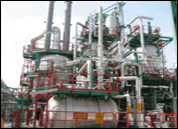
Evaluated the attractive-ness of formaldehyde derivative end-markets for a major global chemical company. The company was exploring various diversification growth opportunities and sought to leverage its core competency in formaldehyde and formaldehyde resin technology. The study analyzed nearly twenty formaldehyde downstream markets. It then evaluated the supply-demand balance, assessed the degree of customer and producer concentration and forecasted market growths for each of the product markets. The study went on to identify the degree of profitability of each of the players in selected product markets. As a result of the study, the chemical company has begun to pursue M&A activity targeted at specific producers in key product markets.
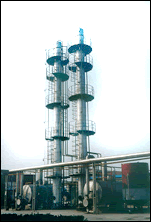 Developed a wax diversification strategy for a major North American wax producer. The company was the leading producer of emulsified wax in North America for the forest products industry. Nonetheless, the company had not been leveraging its scale in raw material purchases nor had it been able to branch off into the production of more lucrative wax products. The study identified the key wax markets and assessed the potential of the company to enter them. As a result of the study, the company has diversified into the production of wax for gypsum board, has leveraged its raw material scale and is exploring opportunities to enter the wax compounding business. Developed a wax diversification strategy for a major North American wax producer. The company was the leading producer of emulsified wax in North America for the forest products industry. Nonetheless, the company had not been leveraging its scale in raw material purchases nor had it been able to branch off into the production of more lucrative wax products. The study identified the key wax markets and assessed the potential of the company to enter them. As a result of the study, the company has diversified into the production of wax for gypsum board, has leveraged its raw material scale and is exploring opportunities to enter the wax compounding business.
| 
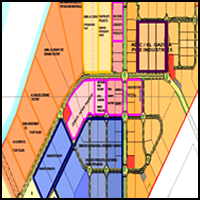
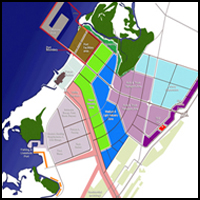
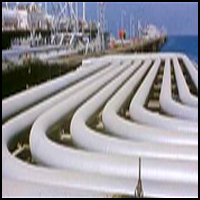
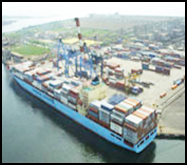

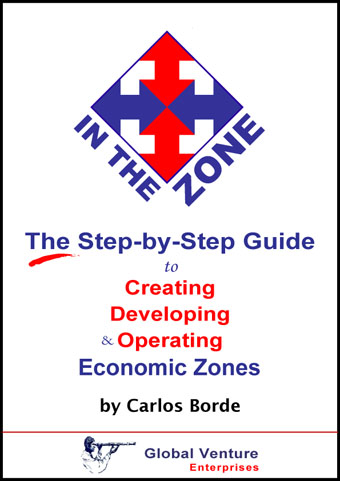









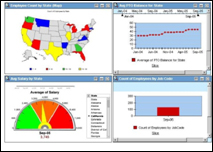




 Evaluated the feasibility for a natural gas transporter and gas processor to move downstream into the distribution of bottled LPG in Thailand. The project assessed the market dynamics for LPG in Thailand. The project team concluded that there was definitely an opportunity for an innovative player to gain an important position in this market. However, the team also believed that the upstream company was ill-prepared to capitalize on these opportunities given its lack of capabilities in this area and its need to focus on other more pressing issues. Consequently, the project recommended against investing directly in this sector. However, it did leave open the possibility of seeking out a JV partner who could bring the necessary capabilities to bear.
Evaluated the feasibility for a natural gas transporter and gas processor to move downstream into the distribution of bottled LPG in Thailand. The project assessed the market dynamics for LPG in Thailand. The project team concluded that there was definitely an opportunity for an innovative player to gain an important position in this market. However, the team also believed that the upstream company was ill-prepared to capitalize on these opportunities given its lack of capabilities in this area and its need to focus on other more pressing issues. Consequently, the project recommended against investing directly in this sector. However, it did leave open the possibility of seeking out a JV partner who could bring the necessary capabilities to bear.
 Designed a strategic alliance framework between a major state owned downstream company and a multinational energy company to develop a service station network in both North and South America. The alliance framework proposed to merge both networks and develop a joint C-Store / Service Station concept. The framework was used as the basis for discussions and negotiations between both parties.
Designed a strategic alliance framework between a major state owned downstream company and a multinational energy company to develop a service station network in both North and South America. The alliance framework proposed to merge both networks and develop a joint C-Store / Service Station concept. The framework was used as the basis for discussions and negotiations between both parties.
 Developed a feasibility and entry strategy for a multinational oil company wishing to enter an emerging market. The study presented the challenge that the energy sector, which the client wished to enter, was reserved for the government. Therefore, the project focused on alternative ways to profitability build brand image through strategic alliances in related industry segments while waiting for the government to open up the market to third parties.
Developed a feasibility and entry strategy for a multinational oil company wishing to enter an emerging market. The study presented the challenge that the energy sector, which the client wished to enter, was reserved for the government. Therefore, the project focused on alternative ways to profitability build brand image through strategic alliances in related industry segments while waiting for the government to open up the market to third parties.
 Developed a cement aggregates exit strategy in an emerging market for one of the largest cement companies in the world. The study analyzed the market conditions for aggregates in the country and concluded that the company should divest its aggregates operations given that the market would remain oversupplied and under-priced for the foreseeable future.
Developed a cement aggregates exit strategy in an emerging market for one of the largest cement companies in the world. The study analyzed the market conditions for aggregates in the country and concluded that the company should divest its aggregates operations given that the market would remain oversupplied and under-priced for the foreseeable future.
 Developed a customer loyalty program for an incumbent power player facing deregulation and increased market competition in Mexico. The project focused on proactively creating a framework to develop and evaluate various marketing initiatives. The project established specific parameters and methodologies for data gathering on customer and competitor intelligence. It then outlined the framework for segmenting the customer base so that differential marketing plans could be developed for each segment. Finally, the project helped identify the capability and resource gaps that existed in order to deliver and support potential marketing initiatives. Management has used the recommendations of this study to develop its strategy to compete in a deregulated market.
Developed a customer loyalty program for an incumbent power player facing deregulation and increased market competition in Mexico. The project focused on proactively creating a framework to develop and evaluate various marketing initiatives. The project established specific parameters and methodologies for data gathering on customer and competitor intelligence. It then outlined the framework for segmenting the customer base so that differential marketing plans could be developed for each segment. Finally, the project helped identify the capability and resource gaps that existed in order to deliver and support potential marketing initiatives. Management has used the recommendations of this study to develop its strategy to compete in a deregulated market.
 Designed the strategic information technology plan for one of the world’s largest Exploration and Production companies. The project focused on how to leverage I/T to meet the company’s business goals. This required a major cultural change at the management level given that up until then, I/T had not been viewed as needing to be included within the company’s strategic agenda.
Designed the strategic information technology plan for one of the world’s largest Exploration and Production companies. The project focused on how to leverage I/T to meet the company’s business goals. This required a major cultural change at the management level given that up until then, I/T had not been viewed as needing to be included within the company’s strategic agenda.
 Evaluated the benefits of backward integration into basic chemicals for a major chemical manufacturer of specialty resins and chemical intermediates. The project identified where value was created along each step of the value chain from the well head to the end consumer. It then determined how historical business cycles affected the profitability of each segment of the value chain. As a result of the study the chemical company is currently exploring various vertical integration opportunities.
Evaluated the benefits of backward integration into basic chemicals for a major chemical manufacturer of specialty resins and chemical intermediates. The project identified where value was created along each step of the value chain from the well head to the end consumer. It then determined how historical business cycles affected the profitability of each segment of the value chain. As a result of the study the chemical company is currently exploring various vertical integration opportunities.


